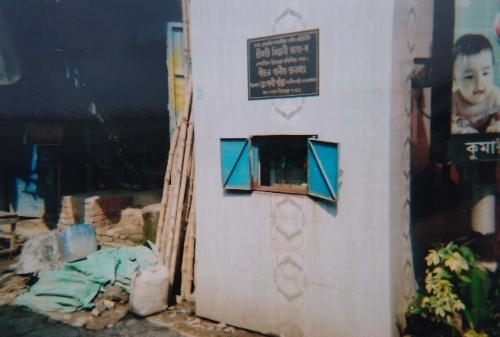
Water at the heart of spiritual life and citizenship in India’s cities
Debapriya Chakrabarti and Purva Dewoolkar (PhD students at The University of Manchester’s School of Environment, Education and Development), along with Dr Deljana Iossifova, Senior Lecturer in Urban Studies, tell us about how water shortages are commonplace for local for residents and how Manchester research is providing solutions to the technical infrastructure.
For ten days, every September to October following the monsoon rains, India is transformed by the Hindu festival Durga Puja. Craftsmen work months on end to produce the typical clay sculpture idols for the annual occasion. On the last day of Durga Puja devotees carry these clay idols through the city to a river or water body, where they're ceremonially immersed into the water to symbolise home-coming.
Yet beyond being at the heart of spiritual and religious life, water is essential for the everyday lives and livelihoods of those producing the Durga Puja clay idols in India’s informal settlements. Kumartuli in Kolkata is one such famous neighbourhood (PDF, 3.31MB) where generations ago craftsmen and artists settled down to benefit from the closeness of the Hooghly River.
At the University, as part of the project Towards Sustainable Sanitation in India and Brazil, we‘re exploring how the everyday lives and practices of India’s urban residents are entangled with basic technical infrastructure (such as water and sanitation) and the socio-environmental, cultural and political structures and systems that produce, maintain or withhold them.
Communal water taps in short supply
Usually a calm part of the city, Kumartuli becomes crowded with seasonal workers in the months leading up to Durga Puja, and packed with the masses of national and international tourists during the festival. Like elsewhere in informal settlements, most permanent or temporary residents don't have access to individual water taps within their homes or work places. Instead, they depend on communal taps for their water supply.

Communal drinking taps are often located behind openings that can be closed and locked up by community representatives, and are only open at particular times during the festival. They’re often in a state of disrepair, their taps broken and sometimes missing altogether. Where community taps are broken or missing, the residents are left without access to safe drinking water or basic sanitation.
Inclusion and exclusion due to technology
India’s Housing and Urban Affairs Ministry recently announced plans to provide universal water supply through functional community taps. However, to apply for the construction of water taps, households require access to the internet and appropriate digital literacy and technology.
In Mumbai, for instance, out of the 1,200 applications for stand post connections filed by local campaigner Pani Haq Samiti (PHS) between 2017 and the start of the COVID-19 lockdown in March 2020, only 785 have been accepted for processing. Of these, 96 applications have been successful, granting water to only 400 families. Only 7% of the families who succeeded in applying for legal community water taps have been successful. This raises critical questions of inclusion and exclusion.
We develop technology that supports local communities in plugging into municipal systems of provision and realising their rights as citizens. One example is the Right to Water app. The app – to be rolled out in 2021 – will track how applications for water connections pass through Mumbai’s complex bureaucratic system. It will be used by PHS volunteers, making their work significantly more efficient in allowing them to log and trace applications on their smart phones. In identifying the location of roadblocks in the approval process, the app will also support PHS in negotiations with municipal decision-makers.
-
Debapriya Chakrabarti
PhD student at the School of Environment, Education and Development, The University of Manchester
View Debapriya Chakrabarti's research profile
-
Purva Dewoolkar
PhD student at the School of Environment, Education and Development, The University of Manchester.
View Purva Dewoolkar's profile
-
Dr Deljana Iossifova
Senior Lecturer in Urban Studies, School of Environment, Education and Development, The University of Manchester
View Dr Deljana Iossifova's research profile



